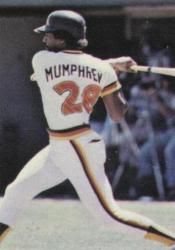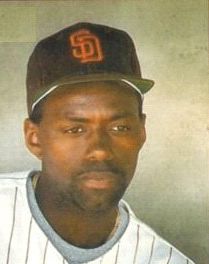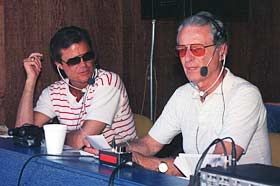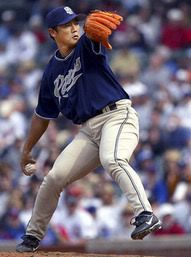Top 100 San Diego Padres: #95 Jerry Mumphrey

JERRY WAYNE MUMPHREY | CF | 1980 | CAREER
STATS
It was 1980, and speed was king. Baseball’s landscape was littered with basethieves more daring and prolific than any in today’s game. And no team boasted more of these larcenous jackrabbits than the San Diego Padres.
This was the game I grew up with, and while I now realize the insignificance of the stolen base on runs scored, I will never forget how much fun it was to watch. And watching the Padres, the first team in MLB history to feature three players with 50 or more steals, was indeed fun.
The most effective of the local bandits was a comically bad-fielding centerfielder named Jerry Mumphrey. In his lone season in Padre-brown, Mumphrey stole 52 bases (30 more than the second-best total in his fifteen-year career) and was caught a mere five times. His .298 batting average and 49 bases on balls enabled him to post a .352 OBP, relative to a league OBP of .320. Jerry’s stolen base total, in addition to Gene Richards’ 61, Ozzie Smith’s 57, and Dave Winfield’s 23, helped the Friars pace the NL with a now-unthinkable 239 thefts.
Unfortunately, much of the apparent value of Mumphrey’s offensive performance was negated by his defensive misadventures. His circuitous routes to the ball, coupled with his league-leading 11 (yes, ELEVEN) errors, made him a less-than-ideal centerfielder. With the equally inept Richards in left, perennial Gold Glover Winfield was the pitchers’ only outfield friend.
Mumphrey had been obtained from the Indians for Bob Owchinko and Jim Wilhelm, neither of whom will appear in this Top 100 countdown. On March 31 the following year, after a single memorable Padre campaign, Jerry was shipped to the Yankees with John Pacella in exchange for Ruppert Jones, Joe Lefebvre, Tim Lollar, and Chris Welsh. Two of the players netted in that transaction will appear on our list. Essentially, Owchinko, Wilhelm, and Pacella were swapped for three of the 100 best players in team history. If that is to be Jerry Mumphrey’s legacy, perhaps 95 is too low a ranking











